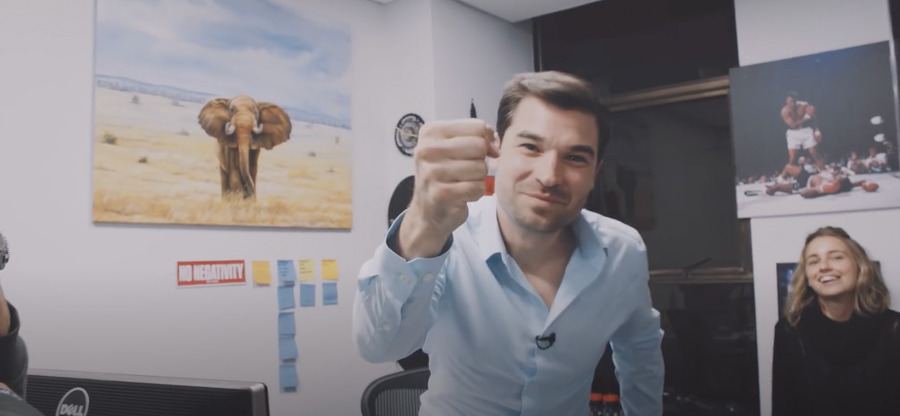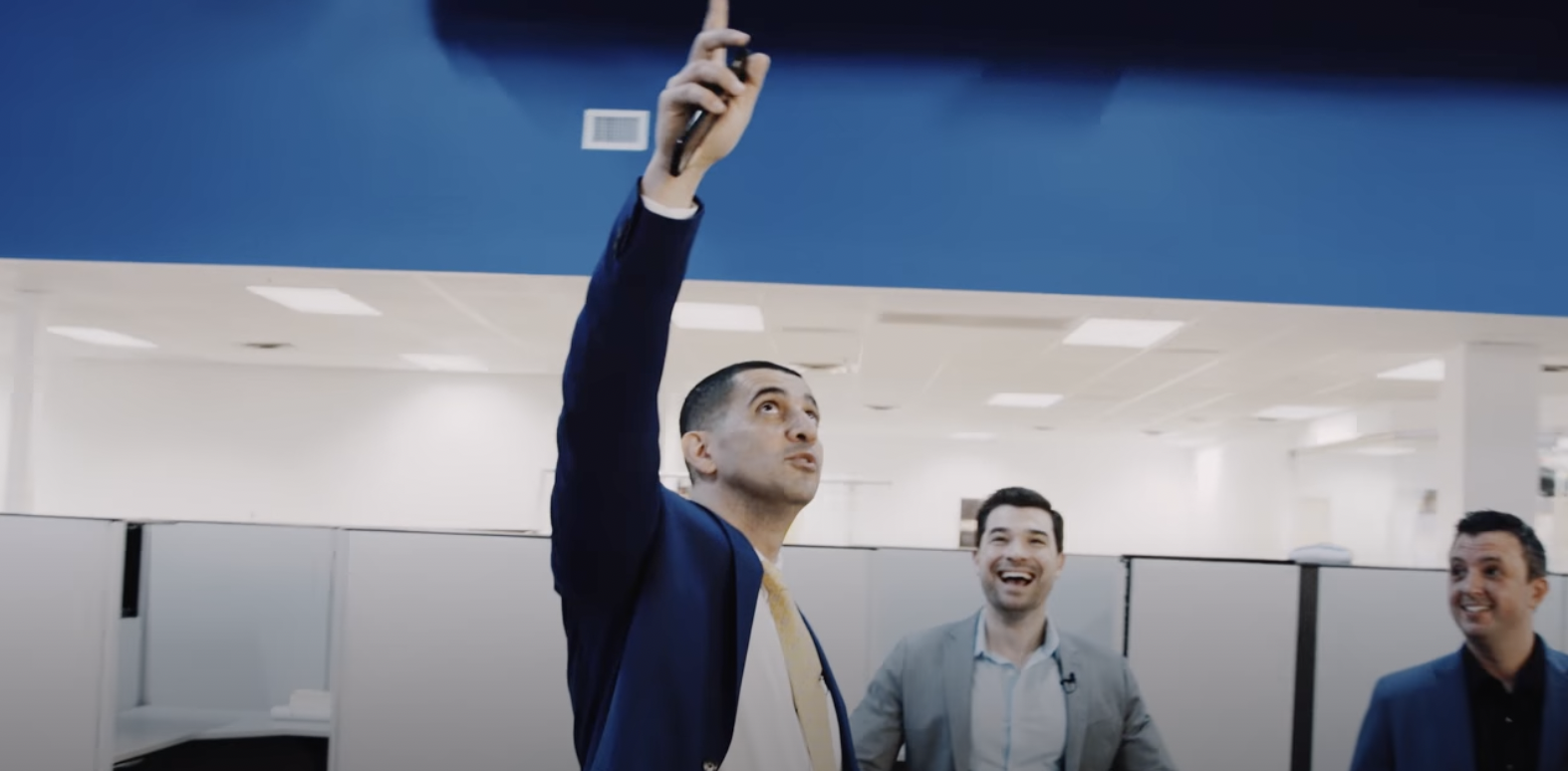Closing sales deals is an all-in situation. Despite the fact that it’s all-in and one of the most nerve-wracking steps of the entire selling process, using the right B2B sales closing techniques can help you simply seal deals without any customer objections!
If you’re thinking, “Nah, no B2B sales technique will ever make closing deals simple,” then it’s probably because you’re used to using the worst, least effective closing techniques.
Believe it or not, most closing techniques are not just ineffective, but cause flat-out failed deals!
That said, I’m sharing 5 B2B sales closing techniques with an ROI of zero! Additionally, I’m also sharing why they’re ineffective and what you can start doing now to simply close more deals in less time.
Sure, keep using these techniques, but you’ll only:
- Face countless objections
- Let B2B buyers slip right out of your hands
- Fail to close what could be simple deals
Closing deals is simple. If it feels anything but simple, it’s because you’re using the wrong techniques!
How to Close B2B Sales Deals
First things first, how do you close sales deals in the first place?
Closing a deal is the culmination of your (hopefully short and sweet) selling process.
It’s the point at which you lay the sales deal down on the table at the final sales pitch and get it signed on the dotted line–right then and there.
While closing deals might sound complicated at first, it truly isn’t. That is, at least, if you do these two things:
- You’ve kept your selling process short and sweet up to this point; and
- You utilize the right closing techniques during your final pitch.
As long as you’ve kept your selling process in line leading up to the B2B deal signing and use the right closing techniques to push the sale over the edge, then closing is the most simple part of the entire sales process!
How to Close a B2B Sale With a Customer Objection
You might be thinking to yourself, “But my leads always make tons of objections right at the bitter end which throws off my ability to close deals.”
If that’s something you’re thinking, then consider this: While objections aren’t necessary to close a deal, they can HELP you close if you choose to use them to your advantage. By that, I mean that you can use customer objections as an opportunity to pull out effective closing techniques that you wouldn’t have used otherwise.
Imagine that a patient is sitting in their doctor’s office waiting for the doctor to come in and suggest a treatment for their severe back pain. After the doctor comes in, they tell the patient that they need back surgery.
Suddenly, the patient is thrown for a loop. After all the appointments and scans, they begin to question whether or not the operation is really worth it.
To get the appointment back on track, the doctor uses specific techniques to regain control of the situation and help the patient trust in their expertise. Ultimately, the patient is reassured and chooses to press forward with the surgery. Had the patient not made the initial objection, then the doctor wouldn’t have had the chance to build that extra layer of trust with the patient.
From now on, think about objections as additional opportunities to leverage your position in the sale!
-min-Mar-05-2022-03-13-26-30-AM.png?width=900&name=1%20(1)-min-Mar-05-2022-03-13-26-30-AM.png)
Why Most Closing Techniques Don’t Work
To put it simply, most closing techniques are blatantly ineffective. If most of them were, then more sales reps would struggle less with closing what are truly simple deals!
This begs the question: What’s the key reason why most closing techniques don’t work?
The key reason why most closing techniques don’t work is that they take the power of the closing out of your hands and put it into the hands of leads. The hard truth is that nothing good ever happens when leads control the close!
Why?
Because prospects don’t know what’s right for them. On the other hand, as the expert sales professional you are, YOU know what they need to solve their pain points. So, unless you are in charge, then the prospect’s unsound decision-making, or what I like to call their “monkey mind”, will take over.
Think of it like this: Letting the potential customer take control at the bitter end of the selling process is like asking a two-year-old what they want for dinner–they’ll probably give you a ridiculous answer and the situation will break into total chaos.
As the expert, your job is to use specific closing techniques that strengthen your grasp of the closing. By doing so, you’ll guide prospects right towards the purchasing decision that they wouldn’t have made had you not been in control.
Why Effective Sales Techniques Do Work
Given what I just said, effective closing techniques are effective because they help you keep your grip on control of the sale. Rather than letting the prospect’s monkey mind takeover, you hold the power.
As a result, the prospect is guided towards making the proper decision that’ll ultimately take their business to the next level. At the same time, you close the deal with more confidence than ever before.
On top of helping you stay in control of the sale, effective techniques are effective for a few other key reasons, including:
- Targeting the prospect’s emotions
- Building a firm sense of trust
- Targeting the prospect’s business vision
Like I mentioned above, if you’ve done your job well up until this point and then apply effective techniques to your close, then it’s an almost guaranteed slam dunk.
5 Common B2B Sales Closing Techniques With Zero Impact
Here are 5 common B2B sales closing techniques that do anything but help sales teams close deals.
Rather than helping sales professionals close deals, they’re a literal set-up for failed deals, objections, and major disappointment!
Stop shooting yourself in the foot; stop using these techniques! Remember, closing deals is a simple, straightforward process. If it doesn’t feel that, then it’s probably because you’re using these techniques.
1. Soft Closing Techniques
Soft closing techniques are exactly what they sound like: Those that have a more low-impact effect, versus hard closing techniques that have a harder-impact effect.
For example, soft closing techniques include:
- Encouraging soft emotions such as happiness
- Speaking in a softer tone of voice
- Asking light-hearted questions
Soft closing techniques are some of the most appealing to sales teams because they make sales reps feel as if they’re helping make their prospects feel positive and supported before making a buying decision.
However, while soft techniques sound nice on the surface, they do anything but help you effectively close deals. Moreover, soft closing techniques are prime examples of how to hand control of the closing over to prospects!
Why?
Because soft techniques send the signal that you’re not the expert you claim to be. The moment prospects stop seeing you as an expert is the moment they feel inclined to take control.
So instead of using soft techniques that sound nice but actually are counterintuitive, opt for harder closing techniques.
Hype-Up a Sense of Urgency
Before going any further, I will say that hard closing techniques have nothing to do with being overbearing, rude, or aggressive. Rather, they’re rooted in assertiveness.
While often stigmatized as being negative, assertiveness is a matter of being straightforward and direct. Nothing bad ever comes out of a deal when the sales rep is straight-up and to the point!
That said, perhaps the best hard selling technique you can use is hyping up a sense of urgency. Hyping up urgency is a way to start internally brewing the prospect’s buying motivations.
There are several ways to get urgency brewing, including:
- Talking in a mild and somewhat mysterious voice
- Encouraging the prospect to think bigger about their business vision
- Setting time constraints for the deal
Until that internal push to buy is there, potential customers are unlikely to move any closer toward the deal.
Close on the Most Urgent Note
The moment that the prospect’s urgency starts to peak is the moment you need to lay the deal down on the table. It’s at that moment that the prospect’s motivation to buy will be highest.
Think of it like this: Imagine that a customer goes to a clothing store and finds a shirt that they like. The sales rep informs them that it’s the last one available in that size. Suddenly, the customer’s internal motivation to buy starts brewing.
If the sales rep wants to ensure that the customer purchases the shirt, they should immediately try to close the deal by saying things like, “Why don’t I ring you up for that?” or “Let me direct you to the fitting room.” Unless the sales rep jumps on their urgency right away, then they’re likely to start thinking things like “Do I even need this shirt?”
Bottom line: Secure the deal by laying it down on the table right when urgency is at its highest.
-Mar-16-2022-11-56-30-25-PM.jpg?width=900&name=1%20(1)-Mar-16-2022-11-56-30-25-PM.jpg)
2. The Question Close
Another one of the most popular closing techniques is the question close. However, just like the soft close, the question close is nothing but a setup for a failed deal.
The question close is that in which you wrap up the final pitch with a probing question. More specifically, questions that probe whether or not the potential buyer is on board with your plans to solve the pain point.
For example, questions such as, “Do you think that the plans I just laid out will help solve your pain point?” or “In your opinion, what do you think we could do to make this situation better?” are posed the moment the presentation ends.
At first glance the question close makes total sense: You’re there to solve the customer’s pain point, so it’s important to ask them what they think about your plans to solve it... right?
WRONG.
The best sales professionals never attempt to close deals on a question, because it completely contradicts the fact that they’re supposed to be an expert who knows exactly what needs to be done!
If you go the entire sales cycle trying to prove yourself as an expert but then suddenly contradict yourself right at the bitter end, potential customers will immediately doubt your competency.
Experts Don’t Question Themselves
Let’s say that you're going in for a final check-up before an upcoming knee surgery. During the appointment, the surgeon talks you through exactly how they’re going to fix your knee so that you can get back to healthy living. Then, right at the bitter end, they say to you, “So, do you think that the surgical techniques I outlined sound good?”
Suddenly, you’re thrown for a loop... Isn’t the surgeon supposed to know what’s right for you? If they’re such an expert, why would they ask you, a non-surgeon, what is and isn’t best for them?
Unless you want prospects to question your expertise and rethink their purchasing decision, don’t try to close the deal on a supposedly probing question.
Now, this isn’t to say that experts don’t ask questions. In fact, the entire purpose of the selling process up until the final sales pitch is to ask in-depth questions in order to understand prospects on a deeper level.
However, come the final sales pitch, questions are no longer a part of the picture. Rather than asking questions, your job is to tell it like it is.
Close on the Outcome
Instead of closing on a question, close on the outcome. By outcome, I mean the end result that you’re helping prospects get to by solving their pain point.
For example, the outcome of a knee surgery is the ability to live a healthier life without pain. Similarly, the outcome of your product/service is helping your prospect’s company thrive.
By closing out on the outcome, what you’re really doing is channeling the prospect’s business vision. And there’s nothing that gets prospects excited and motivated to buy like their vision!
3. The Bottom-Up Approach
The bottom-up approach is that in which you make the final sales pitch to individuals lower on the “food chain” at your prospect company.
By individuals lower on the food chain, I’m talking about those who don’t have the final say in making buying decisions. Moreover, they’re not the top stakeholders or decision-makers at the company.
Many sales teams opt for the bottom-up approach because they believe that it’s inappropriate or doesn’t align with social norms to approach top decision-makers directly. Unfortunately, they’ve bought into the narrative of “you have to start from the bottom and work your way up.”
Not only is that mentality toxic, but bottom-up approaches are a dead-end in terms of closing deals.
Instead of starting from the bottom and working your way up, you should start from the top and work your way down. Specifically, you should be making final sales pitches directly to the top decision-makers.
Target Decision-Makers
Here’s what happens when you make final pitches to anyone who isn’t the decision-maker: You nail the presentation, the prospect’s emotions get hyped up, you lay the deal on the table, but then the prospects hit you with, “We need to get back to you!”
All of a sudden, you’re being left in limbo because prospects need to go and confirm with their superiors before giving you a “yes.” And, who knows how long it’ll take for them to respond!
That said, from the very start of the sales cycle, you need to be connecting with decision-makers right off the bat. Better yet, do your initial round of outreach to the decision-makers themselves!
Rather than targeting people lower on the food chain, make your sales calls or send LinkedIn messages to the top stakeholders.
That way, you’re never left hanging in limbo right at the bitter end.
Shorten the Sales Process
The more time between you laying the deal on the table and getting a response from prospects, the longer the selling process becomes, and the less likely you are to close the deal.
Why?
Because, with extra time on their hands after the final pitch, prospects suddenly have plenty of time to think of reasons not to work with you. Moreover, their monkey mind will take over and talk them out of making a purchasing decision.
That said, keep the timeframe between making the final pitch and getting the signature on the dotted line as short as possible! The best way to do that is by making sure you have the decision-makers there at the final pitch.
4. Summary Closes
Summary closes are those in which you conclude the final pitch by summarizing the specific items that your prospect is intending to purchase.
For example, if you sell sales strategy services, you might reiterate the fact that you’re going to help the customer streamline their marketing, assist with cold calling techniques, and regularly organize their CRM.
It’s a way to wrap up the specific items of your deliverable that you’ll use to help prospects overcome their pain point.
The problem with summary closes is that they’re a total emotional buzzkill.
The truth is that prospects don’t care about the individual specs of your product or service. Rather, what they do care about is if you’re going to produce results for them.
If you end your pitch with a cute little summary of all the items you’re going to deliver, it’ll instantly drop the mood from one hundred to zero. Suddenly, they’ll be a lot less enthusiastic to sign the deal.

5. Take Away Closes
The take away close technique is a play on a popular parenting technique in which parents take away a child’s privileges as punishment for poor or irrational behavior.
From a parenting perspective, the idea is that once you start to take privileges or items away, it’ll make a child think to themself, “Oh no, I better get my act together before something else gets taken away.”
From a sales perspective, sales reps pull out the take away closing technique when they feel as if the prospect is hesitant to make a purchase for some irrational reason. They’ll start removing product or service features in order to incentivize prospects to sign the deal before something else gets taken away.
Again, while this technique might sound good in theory, it’s a completely different story when put into practice.
At its core, take away closes are a form of negotiation. And, the second you and your sales team open up to negotiation is the second they start to see you as less of an expert and more of a replaceable vendor.
Would an expert surgeon ever negotiate the price of a surgery or say to a patient, “Unless you say yes to the surgery now I won’t do as good of a job performing the surgery”? Of course not.
That said, if you ever get the sense that prospects are hesitant to buy, don’t suddenly start removing features. Rather, simply open the floor up for prospects to make objections and then adequately address them.
Final Thoughts on Sales Closing Techniques With Zero ROI
At the end of the day, whether or not you close deals simply is totally up to you! You really can get prospects to make purchasing decisions at the final sales pitch, it all comes down to your methodologies.
Keep in mind that just because other salespeople are using these outright useless closing techniques doesn’t mean that you should too. Just because everyone is doing something doesn’t mean that it’s effective or correct!
How much longer will you keep sabotaging your own sales deals by using the wrong techniques?
You May Also Like
These Related Articles

5 Ways to Lose a B2B Sales Deal Before Making the First Pitch

Everything You Need to Dominate B2B Sales | A Complete Guide




